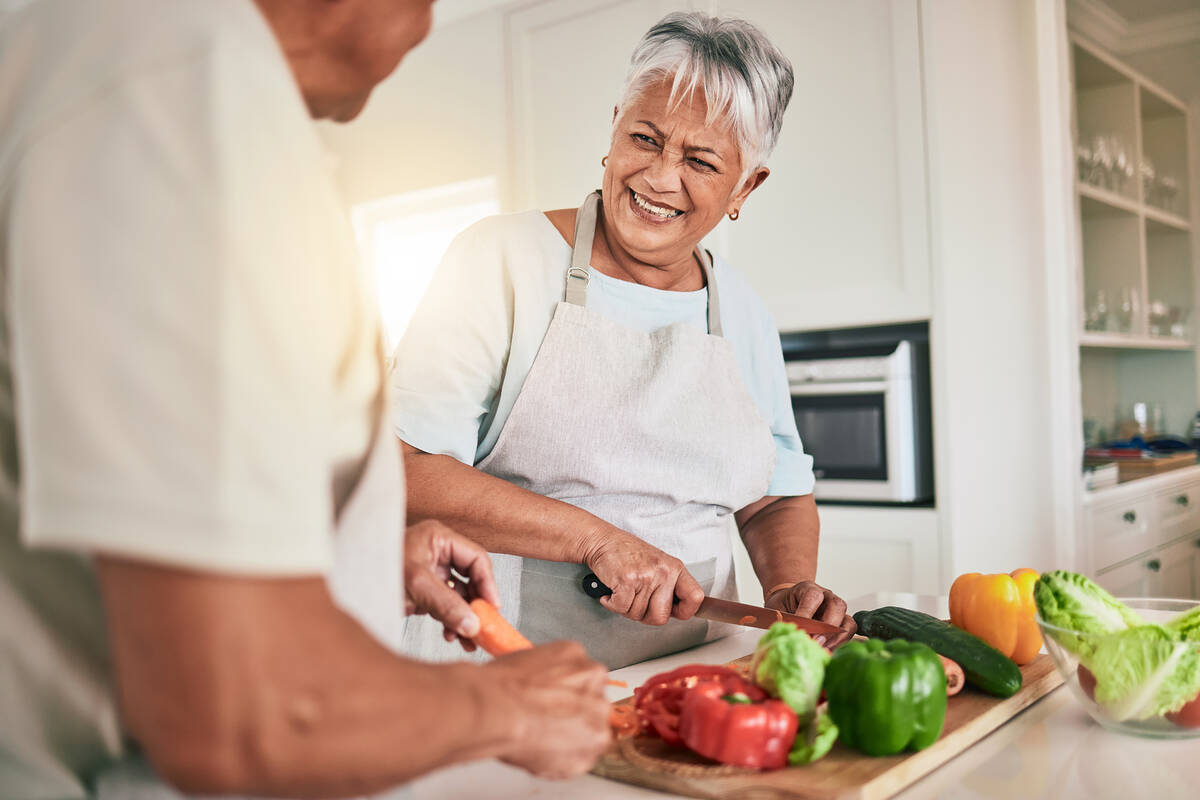Why seniors may face obstacles to eating healthy
from: ReviewJournal.com

Eating? That comes naturally for Americans of just about any demographic or age group.
Eating nutritionally? That takes some attention, particularly for older Americans, who face healthy eating challenges, both medical and practical, that their younger counterparts may not.
According to the National Council on Aging, age-related changes in the body, greater mobility problems and having less access to healthy food are just a few of the factors that can lead to malnourishment among seniors.
However, seniors can eat healthy by paying attention to some basic guidelines, seeking reputable information about menu planning and preparation, and making prudent food choices.
Weight loss tip-off
It’s no secret that a good diet contributes to good health. So, it’s not surprising that eating — what a senior consumes and how they dine — is a common topic during office visits with senior patients, according to Dr. Hilary Schroeder, a family medicine physician and associate medical director for the adult medicine department of Southwest Medical Associates.
In some instances, seniors’ diet issues will revolve around obesity and overeating. But just as often, the discussion could be about healthy eating or not eating enough, Schroeder said.
A common tip-off that something may be amiss nutritionally speaking is weight loss, Schroeder said.
Weight loss — and an accompanying decrease in appetite — can be associated with specific medical conditions. It also could be related to something as straightforward as dental problems or difficulty chewing.
Whatever the cause, seniors run the risk of developing or aggravating chronic medical conditions by how, and what, they eat, Schroeder noted.
Changing with age
Poor nutrition also can stem from physiological changes that can come with aging. For example, our metabolism changes with age, said Samantha Coogan, a registered dietitian nutritionist and director of the didactic program in nutrition and dietetics at UNLV’s School of Integrated Health Sciences.
“Many times it slows down as you get older,” Coogan said, even as physical activity levels may decrease.
In addition, appetites tend to decrease as we get older, Coogan said, and medications seniors may take, or medical conditions they may have, can diminish the pleasure of eating and lead to weight loss and malnutrition.
“When food isn’t palatable enough, it’s not enjoyable,” Coogan added.
A lack of adequate nutrition can make the medical conditions that seniors commonly face — high blood pressure, heart disease and kidney conditions, among them — more difficult to manage, Coogan said.
Even emotions that may be associated with aging — for example, experiencing depression or loneliness from the loss of a spouse or not engaging socially or not getting enough sleep — can suppress the appetite and lead to poor nutrition, Schroeder said.
In addition to physiological and medical challenges, seniors can face practical and logistical hurdles that make it difficult to eat nutritionally.
For example, seniors who don’t drive may have no easy way of getting to supermarkets to shop for nutritious foods, Coogan said. Personal mobility challenges — using a wheelchair, for example — also may limit a senior’s ability to navigate a supermarket.
Meanwhile, tight retirement budgets can limit food-buying ability or prompt less-healthy choices.
“Sadly, as a whole, healthy foods cost more,” Schroeder noted.
Shopping and planning
This stew of potential obstacles makes it particularly important for seniors to learn, or relearn, how to shop for and prepare nutritious foods.
Just as our appetites and nutritional needs change, so should our shopping habits.
For example, we lose muscle mass as we age, which makes protein a centerpiece of senior menu planning. Meat, eggs, beans, lentils and grains such as quinoa are good sources of protein, Coogan said, and protein shakes can serve as a handy dietary supplement.
Fruits and vegetables also should be incorporated for their nutrients and fiber. You do not have to get organic produce in order to eat healthy, Coogan noted, but take care to “wash food a little more.”
Take advantage of other produce options, too. “People equate ‘fresh’ with ‘healthy’ ” Coogan said, but “we often recommend canned vegetables. Just rinse them off.”
Similarly, canned fruits packed in syrup can be drained and rinsed, she said.
Consider expanding your menu of food sources to include Walmart and big box stores. Area food banks and pantries also can offer affordable foods to cash-strapped seniors. Area senior centers often offer classes in food shopping and preparation for seniors
For photos and more details visit ReviewJournal.com





